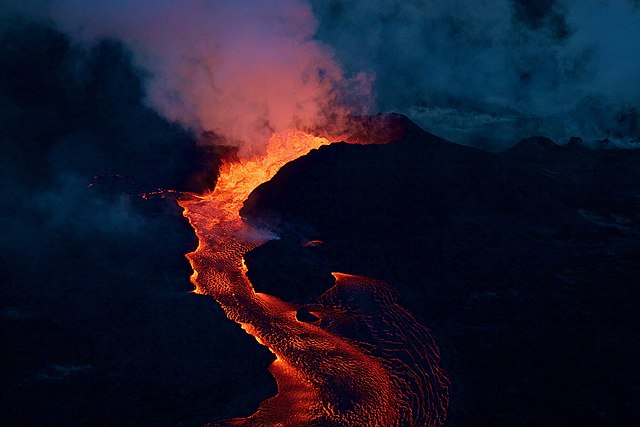Intraplate volcanism is volcanism that takes place away from the margins of tectonic plates. Most volcanic activity takes place on plate margins, and there is broad consensus among geologists that this activity is explained well by the theory of plate tectonics. However, the origins of volcanic activity within plates remains controversial.
An illustration of competing models of crustal recycling and the fate of subducted slabs. The plume hypothesis invokes deep subduction (right), while the plate hypothesis focuses on shallow subduction (left).
Volcanism, vulcanism, volcanicity, or volcanic activity is the phenomenon where solids, liquids, gases, and their mixtures erupt to the surface of a solid-surface astronomical body such as a planet or a moon. It is caused by the presence of a heat source inside the body. This internal heat partially melts solid material in the body or turns material into gas. The mobilized material rises through the body's interior and may break through the solid surface.
A gentle, or effusive, volcanic eruption, in which liquid material (lava) gently flows from a vent, in this case in south-eastern Hawai’i island
The high initial temperatures of silicate lavas mean that they emit visible light before cooling.
Olympus Mons (Latin, "Mount Olympus"), located on the planet Mars, is the tallest known mountain in the Solar System.




